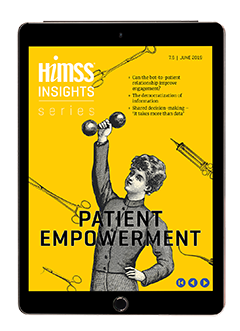
It has long been argued that replacing the traditional “repairing disease model” of healthcare by a “keeping people as healthy as possible model” requires a complete rethink of how healthcare, and specifically primary care, is provided—away from fee-for-service models and toward population health management models for patient empowerment.
Attractive as these models might be, they only exist in a small number of countries, and nowhere have they been implemented on a national scale. Learn more about two best practices in the U.S. and Europe, as we ask how modern, patient-facing IT solutions might help capitation models gain more momentum, along with a feature addressing the changing bot-to-patient relationship and thought leadership observing the impact that the democratization of information can have on healthcare.
There are many lessons that can be learned from pre-digital projects. Many contemporary projects that fail would probably work better if their champions studied some of the existing literature before launching the next digital tool. The lessons go along the lines that there is more to empowering patients than data and tools, and there is also more to it than patients. Digitization is, of course, a fantastic way to help patients who want to engage to do so. With transparent data, an individual patient is less dependent on specific institutions, for example, which is hugely empowering.
But transparency and data alone won’t do the trick, as is illustrated by many personal health record projects and even more digital adherence projects that ultimately fail. The best results will probably be achieved if the starting point is not data or patient experience, but integrating care.
